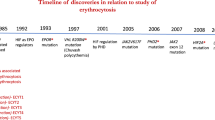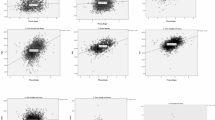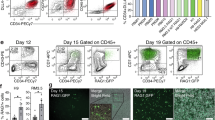Abstract
ERYTHROCYTES from patients with paroxysmal nocturnal haemoglobinuria (PNH) are lysed excessively by agents which peroxidize lipid, and their lipid forms more lipid peroxides than that of normal erythrocytes1,2. Recently we noted that incubation of normal red blood cells in reduced glutathione results in cells with all the usual in vitro lytic features of “natural” PNH cells. In the work reported here we have compared lipid extracts from red blood cells of normal subjects and patients with various haemolytic disorders with those of “natural” and “induced” PNH cells, with respect to peroxidation.
This is a preview of subscription content, access via your institution
Access options
Subscribe to this journal
Receive 51 print issues and online access
$199.00 per year
only $3.90 per issue
Buy this article
- Purchase on SpringerLink
- Instant access to full article PDF
Prices may be subject to local taxes which are calculated during checkout
Similar content being viewed by others
References
Mengel, C. E., and Kann, jun., H. E., J. Clin. Invest., (in the press, 1967).
Meriwether, W. D., and Mengel, C. E., Nature, 210, 91 (1966).
DeGier, J., VanDeenen, L. L. M., Verloop, M. C., and Gastel, C. V., Brit. J. Haematol., 10, 246 (1964).
Lowry, O. H., Roberts, N. R., Leiner, K. Y., Wu, M. L., and Farr, A. L., J. Biol. Chem., 207, 1 (1954).
Author information
Authors and Affiliations
Rights and permissions
About this article
Cite this article
MERIWETHER, W., MENGEL, C. Peroxidation of Lipid from Paroxysmal Nocturnal Haemoglobinuria-like Erythrocytes. Nature 216, 85–86 (1967). https://doi.org/10.1038/216085a0
Received:
Issue date:
DOI: https://doi.org/10.1038/216085a0



